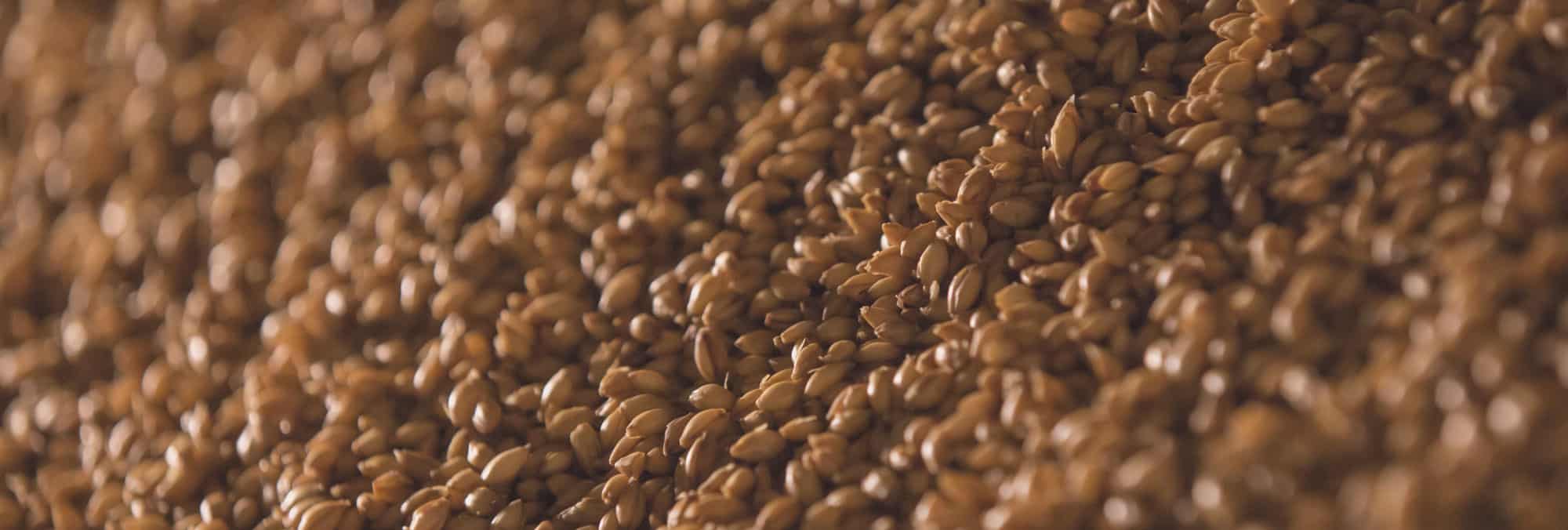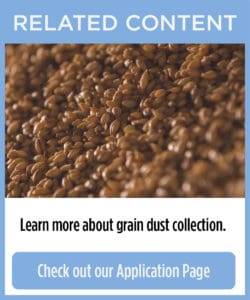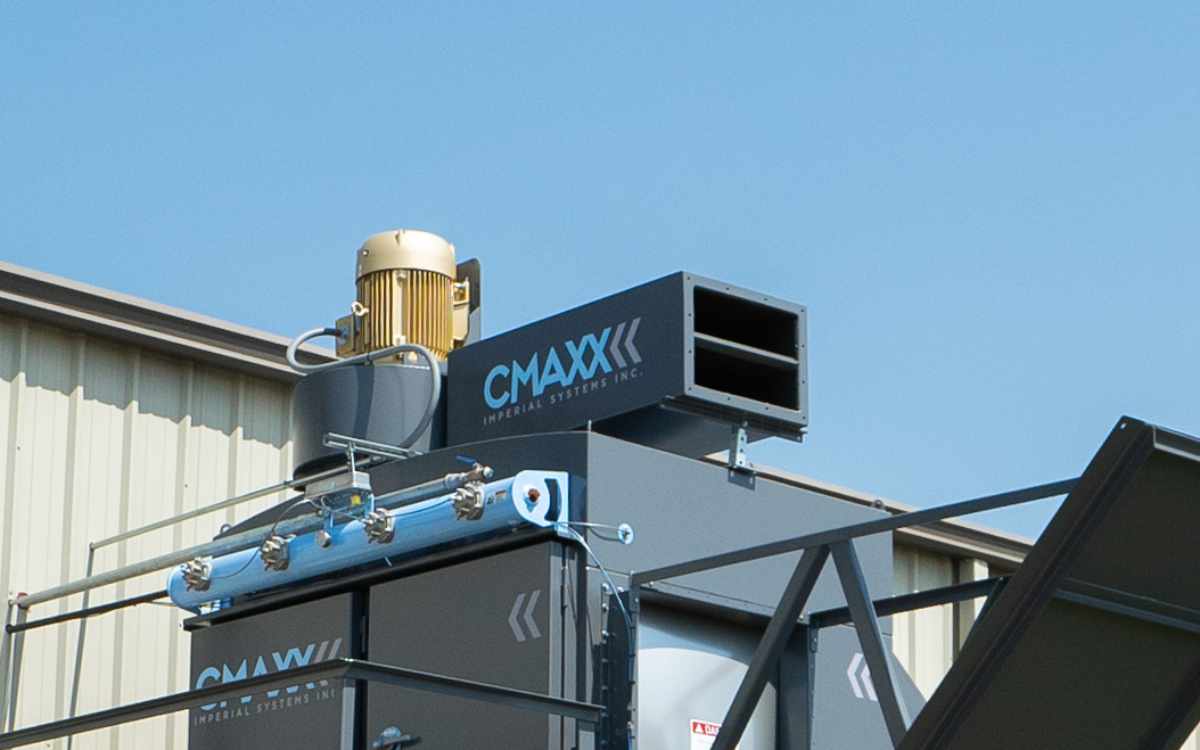Hammer mills process grain and other products in agriculture processes. Industrial hammer mill material handling requires dust collection to prevent combustible dust fires. Handling and transporting agriculture process materials are covered under NFPA 61 and OSHA 1910.272. Many other industries use hammer mills, which produce dust that may be combustible.

Hazards in Material Handling Equipment
Grain dust becomes flammable when it is airborne. Places in the process where grain dust becomes airborne include:
- hammer mill crushers
- conveyor belts and transfer points
- bucket elevator conveyors
- mixers
- loading and unloading points
- dryers
- spouts and hoppers
Material handling systems produce dust, and they also produce opportunities for ignition. A hammer mill grinder is one element of the agricultural process that produces large amounts of dust. A bucket elevator is another one, partly because the material moves around. It can also cause ignition because the bearings can overheat.
In addition to hammer mill material handling, dust can accumulate in other grain processes in agriculture. Some agricultural dust can be very combustible. Managing risk means removing elements of the so-called explosion pentagon. This includes oxygen, ignition source, fuel, containment, and dispersion. Oxygen will always be present, and the dust acts as a fuel. In various parts of the process, the material may be inside a closed space (containment). Therefore, the parts of the explosion pentagon that can be controlled are ignition sources and dispersion. This is true for hammer mill material handling and other process areas.
 Controlling ignition sources includes following all electrical safety standards and watching all equipment, like bucket conveyors, for overheating bearings. Removing all ignition sources is almost impossible. However, getting rid of as many as possible reduces the risk.
Controlling ignition sources includes following all electrical safety standards and watching all equipment, like bucket conveyors, for overheating bearings. Removing all ignition sources is almost impossible. However, getting rid of as many as possible reduces the risk.
Keeping dust from becoming airborne (dispersion) keeps a deflagration from starting. Once airborne dust ignites, the flame must not reach other areas. This is especially true for areas that could cause injury to people. Dust collection systems can prevent dispersion and the spread of a deflagration.
Dust Collection for Hammer Mill Material Handling
Depending on the material, hammer mills can produce a large amount of dust. Many other components of material handling systems, like bucket elevators, also produce dust. NFPA and OSHA standards require control of this dust. Dust must not build upon surfaces or become airborne. A well-designed dust collection system will prevent these.
Some agricultural processes will use a central baghouse with capture hoods located at various dust generating spots, including at the discharge of a hammer mill. This technique for hammer mill material handling can be very effective, especially if one central baghouse can handle the capture points.
Spot filters can be a very effective solution for larger facilities, or for ones where a central baghouse might be too far away. Spot filters can be located at many kinds of capture points for material handling equipment. These include bucket elevators, conveyors, mixers, hammer mills, and loading/unloading points. Cartridge collectors, which are small and compact, can be sized to fit at any of these points. Because the pulse cleaning of the filters is very efficient, filters can last a long time.
Many agricultural process facilities use a combination of both types of dust collection, with baghouses or large cartridge collectors in a central area and spot filters on more remote capture points. Both baghouses and cartridge collectors can work well for hammer mill material handling in agriculture. Depending on how fine the material powder is, a spot filter cartridge collector can be the best solution. This will keep fugitive dust from escaping at a capture point.
Learn more about our Grain Dust Collection Systems.


